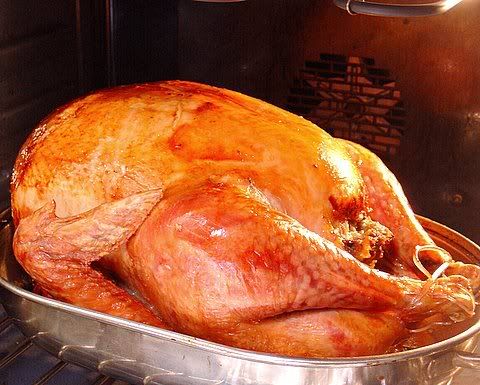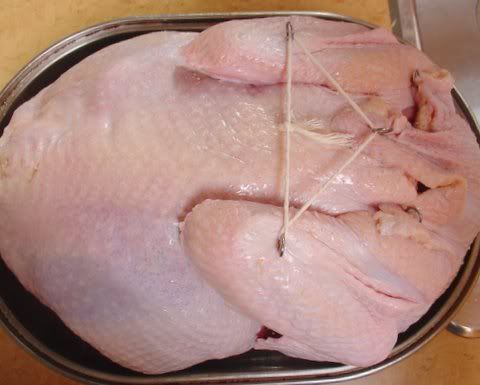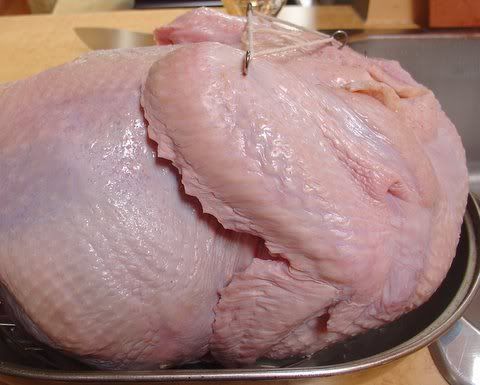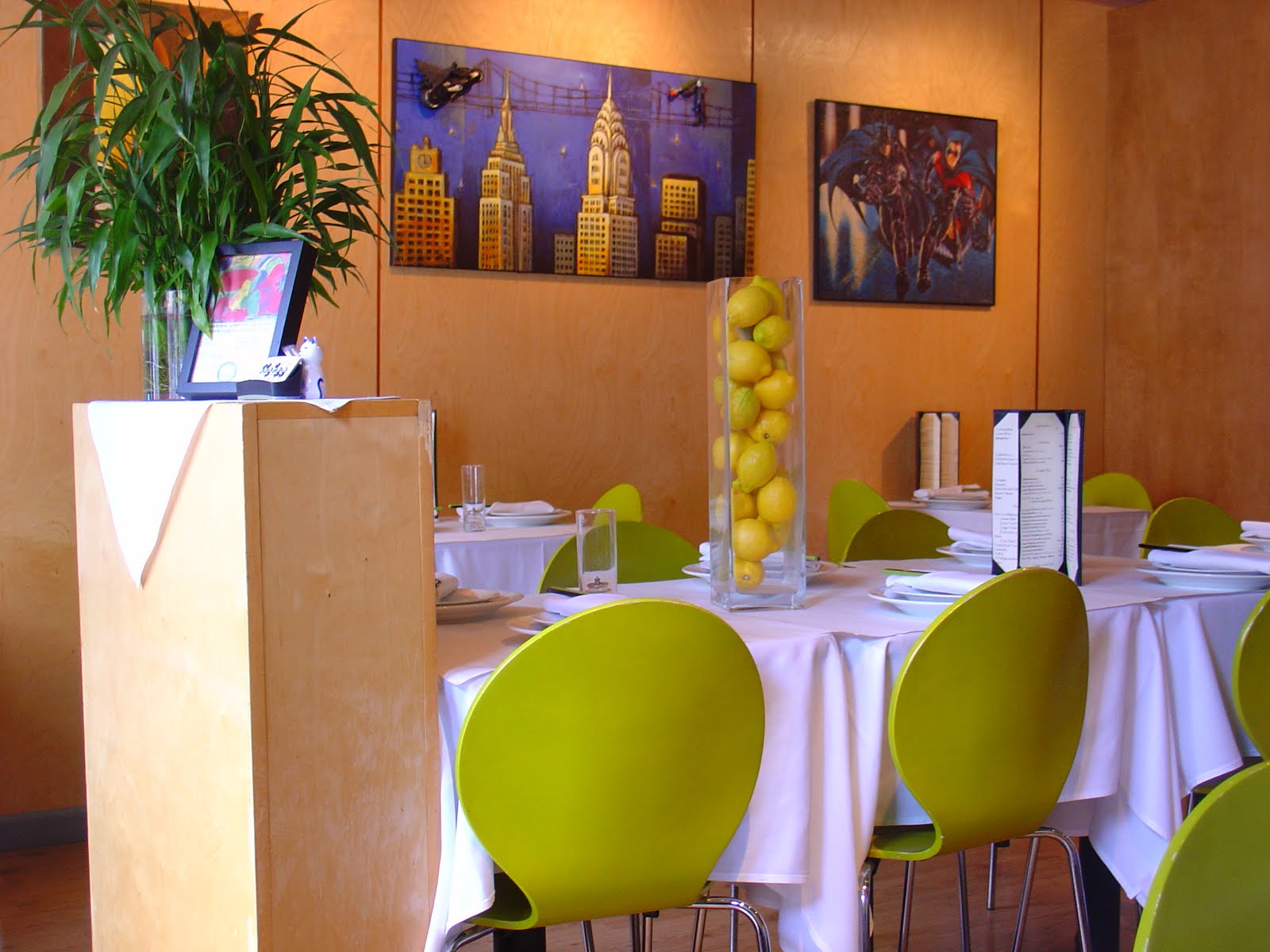
Ingredients:
1 turkey
stuffing (see recipe below and adjust for your own tastes)
butter (if you insist)
Special Equipment:
a roasting pan (a throw away aluminium one will do but you should not attempt to make gravy in it)
a small rack (to elevate the turkey from the pan, so the fat and juices will flow away from the bird)
cotton string
trussing pins (they have a loop at one end for the string, and a point at the other to jab into the bird)
a meat thermometer
Directions:
The first thing to do is make your stuffing, even if it is out of a box, and have it ready to stuff into the main cavity of the turkey and well as the neck area. How do you tell the difference? The tail is at the bottom of the main cavity, sometimes tucked into the cavity, and the neck area is at the opposite end with usually a large flap of skin. You'll need to rinse your fully thawed turkey if you haven't bought it fresh (this may take several days in the refrigerator). Pull out the small package inside the turkey (no it does not come that way in nature, this is a processed bird...) and toss it if you decided against using it for the stuffing...or save it for cat food (Buddy loves the liver).
The first thing to do is make your stuffing, even if it is out of a box, and have it ready to stuff into the main cavity of the turkey and well as the neck area. How do you tell the difference? The tail is at the bottom of the main cavity, sometimes tucked into the cavity, and the neck area is at the opposite end with usually a large flap of skin. You'll need to rinse your fully thawed turkey if you haven't bought it fresh (this may take several days in the refrigerator). Pull out the small package inside the turkey (no it does not come that way in nature, this is a processed bird...) and toss it if you decided against using it for the stuffing...or save it for cat food (Buddy loves the liver).
Preheat your oven to 450 degrees after adjusting the shelves so the turkey will fit into your oven. Pat the turkey dry with a paper towel and start the stuffing process, leaving a small amount of room for the stuffing to expand (you don't want your dinner to explode do you?). After you fill the neck cavity with stuffing you'll find the trussing string and pins very handy. Fold the neck skin tightly toward the turkey and pin the center of it to the turkey back. Take two more pins and secure the wings against the turkey carcass. Now tie the string between all three pins and place your turkey breast side down onto a small rack (I use a cake cooling rack) that you've placed in the pan. Make sure no turkey parts are falling over the edges.You may add more pins to keep the stuffing from falling out of the turkey.
Now roast in the oven, uncovered for 30 minutes. Lower the heat to 350 degrees and place your roasting pan on your stove top. Here's the hard part, flip the turkey over in the pan, so the breast can get cooked to a nice golden brown. I use oven mits. This is the only time I want to hear about you flipping a bird (don't let me down!). Then return the turkey to the oven set at 350 degrees (yes, I'm repeating myself, because it's important to roast the turkey at the lower temperature, so it won't burn or dry out...325 degrees is good too ). Take a look in another 30 minutes and if the breast is a nice color, cover it with tin foil (just lightly placed on top) to keep it from burning. Use the meat thermometer to test the temperature of the turkey; 150 degrees is perfect. Place the thermometer in the thigh meat but don't touch a bone or it will be inaccurate. Let the turkey "rest" for 20-30 minutes before carving (I know it's dead and cannot possibly be tired, but if you skip this instruction, your turkey will be dry, since the juices will flow out like Niagra Falls in Spring, and will not be able to reabsorb into the turkey meat).
What about the butter? Some people think you need to smear butter all over your turkey to make it roast to a beautiful golden brown. We only used the drippings to baste this turkey. What do you think?








No comments:
Post a Comment